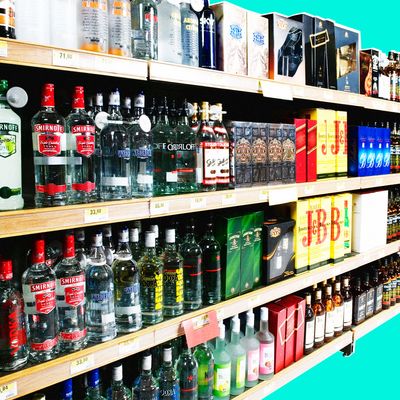
To a certain extent, it’s a mystery why people hurt and kill each other. If it weren’t, we’d have figured out a way to stop it long ago. But as researchers learn more and more about crime, some helpful practical interventions to reduce it are emerging. One of them is strikingly simple: Make a substance that greatly increases the risk people will commit or be victimized by acts of violence — yup, alcohol — a bit more expensive. A new study in the British Medical Journal offers the newest piece of evidence that this approach works, and it suggests that even in the U.K., a much smaller, safer country than the U.S., small increases in the price of alcohol could correspond with thousands of prevented trips to the emergency room.
For the study, a team led by Nicholas Page of the University of Cardiff, examined emergency department (ED) injury data from a swath of hospitals in England and Wales, including patients’ socioeconomic data, between January 2005 and December 2012. They also looked at the cost of alcohol in various regions, both at so-called “on-trade” establishments, where alcohol is consumed on-site (bars and restaurants), and “off-trade” ones where it is bought to be consumed later (markets).
When the researchers ran the numbers, controlling for income and a bunch of other factors believed to correlate with violence (that is, the lower-income you are, the more likely you are to be the victim of violence, all else being equal), they found that “it is estimated that a 1 percent increase in real on-trade alcohol prices could lead to 4,260 fewer violence-related ED attendances per year, while a 1 percent increase in real off-trade alcohol prices could result in 1,788 fewer attendances.” Lumping the two categories together, “a 1 percent sustained increase in the price of alcohol, above inflation, in both markets, could reduce the number of patients requiring ED treatment following injury in violence by over 6,000 patients per year.”
The researchers do note that “poverty and income inequality are the strongest predictors of violence-related injury in England and Wales.” This intuitively makes sense, but on the other hand, reducing poverty and inequality may, in many cases, be a lot trickier than jacking up an alcohol tax a bit.
If you’re American, you might be saying, Well, this was a British study. Would something like this work in the U.S.? The answer, so far as experts can tell, is yes — there’s now evidence from a number of different countries that making alcohol more expensive reduces violence. As Mark Kleiman, a professor at NYU and leading crime scholar, said in an email, “Increasing the price of alcohol is the one thing we actually know how to do on a nationwide basis that we also actually know would substantially reduce violence, both right away and in the long term.” Indeed, Page and his colleagues cite several studies — I’m replacing footnotes with links — in noting that “a one-way relationship between the price of alcohol and violence has been identified. In the USA, a 1 percent increase in the ‘real price’ (i.e., inflation adjusted) of one ounce of pure alcohol (a weighted average of beer, wine and liqueur prices) has been shown to decrease the likelihood of women being victims to domestic violence by 5.34 percent.”
So while crime might, like all human behavior, be a complicated, multifaceted thing, this study adds to a pretty compelling pile of evidence suggesting that a fairly minor tweak could save lives and reduce medical costs. Given how obsessed many Americans are with crime, it’s surprising this hasn’t caught on more. Or, as Kleiman put it in his email, “It’s amazing that politicians can get away with being ‘tough on crime’ without pushing to raise alcohol taxes.”




